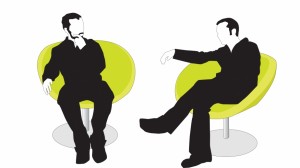Unitrends Recovery-Series Backup Appliances and Unitrends Enterprise Backup Differences, Part 3

In part 1 of this article, I recounted the discussion between a reseller partner friend and me concerning differences between the physical and virtual backup appliances from Unitrends. In part 2, I recounted the part of the discussion including questions which concerned feature differences between the Unitrends Enterprise Backup™ virtual appliance and the Unitrends Recovery-series physical backup appliance. This third and final installment will discuss how Unitrends handles archiving, failover virtualization, replication, customer support, and much more.
To recount just the feature section, while most features are the same between the the physical and virtual backup appliances there are differences. The most important difference is that with the physical appliance your support covers everything – including not only responsive support (when you e-mail or call us when there’s a problem) but proactive support (when we e-mail or call you when there’s about to be a problem) as well.
- What about archiving (tertiary backup)? I think it’s great!
- Seriously, is it different? This is one of the most difficult questions to answer, because when people say “archiving” they typically mean either the software or the hardware. The archiving software is the same. The archiving hardware may be different.
- What do you mean, may be? Unitrends sells with its physical backup appliances an optional docking station (single USB or eSATA drive) or a 4-bay 1U accessory (eSATA.) Those are not available with the virtual backup appliance.
- What is available with the virtual backup appliance? Rotational archiving USB and tape are available as well as fixed archiving NAS and SAN.
- Are these available with all hypervisors (VMware vSphere and Microsoft Hyper-V)? No. The current Windows 2008 R2-based Hyper-V implementation doesn’t support USB or tape. VMware vSphere does. The reason are the capabilities of the hypervisors themselves. We expect Windows 2012-based Hyper-V to support both USB and tape.
- Is there anything in Unitrends Enterprise Backup (the virtual appliance) to prevent it from performing hardware-based archiving in the future? No. We’re committed to exploiting every feature of the hypervisor in this regard.
- Does the physical backup appliance licensing feature, advanced archiving, exist on the virtual appliance? No, the licensing models are completely different (see earlier answer.)
- What about failover virtualization (what we often call instant recovery) – are there differences between the virtual backup appliances and the physical backup appliances? Yes. Unitrends offers on-appliance instant recovery for Windows for the physical appliance but not the virtual appliance. We offer hypervisor-based instant recovery (off-appliance) instant recovery for VMware for both the physical and the virtual backup appliance – and in the next few months we’ll offer that for Hyper-V as well.
- What about third-party integration – like the Exagrid announcement? Great question. I did a blog post on the Exagrid announcement, but let me summarize. Our virtual appliance was designed from the ground-up to be used with third-party components: from Exagrid deduplication devices to HP or Dell servers and so on. Our physical backup appliance allows archiving to third-party NAS or SAN, but not expansion of the direct backup media pool to a third-party offering. If you want to directly backup to an Exagrid Ex5000, for example, you can do so with the virtual backup appliance but you can’t with the physical backup appliance; however, you can archive to the Exagrid deduplication device from either the physical or the virtual backup appliance.
- What about hardware warranties? We offer hardware warranty services on the physical backup appliance but not the virtual backup appliance.
- What about professional services? We offer hourly-based professional services for both the virtual and physical backup appliances.
- How about installation services? Installation services are offered on the physical backup appliance but not on the virtual backup appliance.
- Why don’t you offer installation services on the virtual backup appliance – I thought it was harder to install than the physical backup appliance? You’re absolutely right. But the expertise needed for the virtual backup appliance is below the hypervisor. That’s why I said earlier that you need to make sure you have an administrator well-versed in virtualization to use the virtual backup appliance.
- What if I decide I need your help anyway? We those virtual backup appliance customers two choices: one is simply to call in and get our help if it’s installing our software and the second are hourly professional services if help is needed at or beneath the hypervisor.
- Can you talk some about replication (vaulting)? I can talk for days about replication – not sure you want me to do that, however. 🙂
- Is there any difference between the the physical and virtual backup appliance in terms of replication? There really isn’t difference when you’re replicating (vaulting), but there’s a difference when you go to recover back to a different site. Replication with a physical backup appliance means you’re going to recover locally by recovering from a shipped backup appliance; with a virtual backup appliance it means you’re going to recover from a NAS.
- What else can you tell me in terms of differences? You’re pretty much exhausted me on this. It’s interesting – we always talk about the software being 99% or more the same. But these differences come out of environmental and other issues – and they’re just as real as any software-based difference.
- What do you guys (Unitrends) really want me to sell? Do you care? We sure as heck care. We want you to sell the product that best fits what the customer needs. Period. It’s as simple as that.

